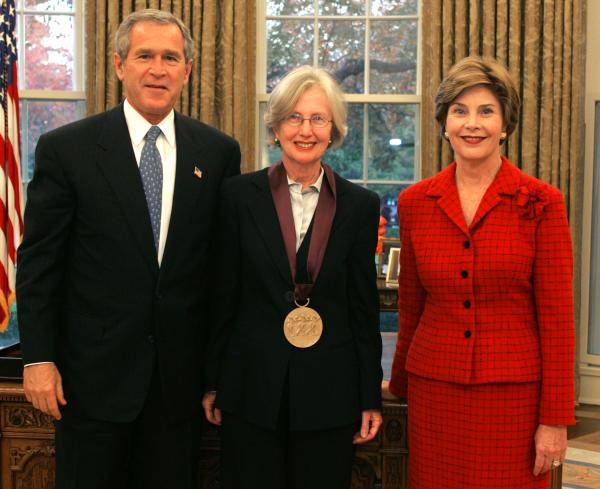Bio
Citation: For decades of outstanding service to the arts and cultural world, and especially for its civic leadership in the New York City arts community in the aftermath of the September 11 attacks.
The Andrew W. Mellon Foundation is a private philanthropic institution, with assets of approximately $4 billion, that makes grants on a selective basis to institutions of higher education, independent libraries, centers for advanced study, museums, art conservation, and performing arts organizations.
The Foundation’s program for art museums is designed to help excellent institutions build and sustain their capacity to undertake serious scholarship on the their permanent collections; to preserve these collections; and to share the results of their work with scholarly audiences and the general public. The conservation program concentrates on advanced training for future generations of conservators, but also supports fundamental work in developing fields such as photograph conservation and conservation science. Both programs are engaged in supporting basic research intended to enable curators, conservators, and other professionals to devote intensive study to the objects in their care, and to make their professional expertise available to others in new as well as in more traditional ways. Annual giving in the area of art museums and conservation has averaged $16 million over the past five years.
The Foundation’s Performing Arts Program focuses on achieving long-term results by providing multi-year grants to to leading organizations in the disciplines of music, theater, dance, and opera. These grants, which are awarded on the basis of artistic merit and leadership in the field, seek to strengthen institutional artistic and administrative capacity; encourage the development and performance of new work; identify and train new generations of arts leaders; reinforce the role of individual artists within institutions; and expand research, learning, and scholarship in the performing arts. Annual giving in the area of performing arts has averaged $16.8 million since 2000.
Two months after September 11, 2001, when New York City arts institutions were faced with a dramatic decrease in audiences, contributions and earned income, the Andrew W. Mellon Foundation announced the creation of a special $50 million fund to assist museums, performing arts organizations, cultural institutions and individual artists directly affected by these events. Emergency support was given to a total of 47 museums and 50 performing arts organizations, including three regranting institutions that distributed funds to 306 organizations and 190 individual artists. A portion of the fund was also used to benefit the people of the City by supporting the public parks that were so important in the aftermath of the tragedy.
The Mellon Foundation is now taking a lead role in making digital images available to scholars, teachers, and students of art history and related fields through a project known as ARTstor. A digital library of world art, with an initial collection of 300,000 images, is currently available on line to nonprofit institutions.


